It occurred to me recently that, whilst the concept of a regulator dial layout, and regulator watch, is something I am familiar with, I had never really thought anything more to what stories might be within the name. It might sound odd to put it so simply, but things are given their particular names for a reason – especially when we are talking about a derivative of a particular type of thing.
For example, within the world of cars, you have supercars, hatchbacks, saloons, off-road cars, sports utility vehicles and more. With planes, fighter jets, commercial airliners, light aircraft, aerobatic aircraft, biplanes… With these names being more ‘descriptive’, I thought that logic dictates that a regulator watch, too, must be named such for a reason.
Whilst a regulator watch is not necessarily used to regulate anything today, the name suggests that at some point in history, there was some ancestor of what we see today that was. And, indeed, that is the case as I’ll explain shortly. However, before exploring where the name came from and looking at some examples, let’s take a step back and explain exactly what we mean when we are talking about a “regulator watch”.
What is a regulator watch?
A regulator watch is one where the hours, minutes and seconds hands are all non-coaxial. This means that each hand is on its own, fixed to and rotating about a different point, rather than each hand being fixed to and rotating about the same point (commonly the centre of the dial).
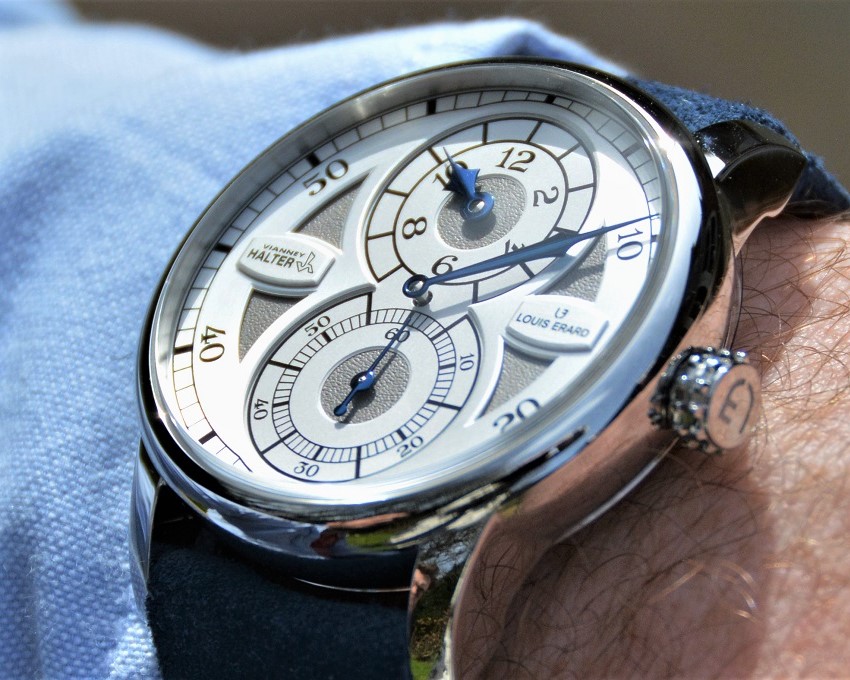
Vianney Halter x Louis Erard La Régulateur
There are many different interpretations of how to present a regulator watch as I’ll look at shortly, however they each have this trait in common.
You will notice on the example above that the hours hand is on its own sub-dial at 12 o’clock, the seconds hand is on its own sub-dial at 6 o’clock, and the minutes hand remains fixed to the centre of the dial as seen on a regular watch dial.
Intuitively this may not be the most efficient way to read the time; we are generally conditioned and used to reading the time from a single dial, where the larger minutes hand and smaller hours hand are fitted coaxially to the centre of the dial. As we learn to read the time in this way, a quick glance at a watch or clock is enough to be able to read the time, thanks to the different sized hands.
However, efficiency is not the reason that the regulator came to be.
The origin of the regulator
As the name “regulator” might imply, the origins of this type of display can be traced to a scenario whereby efficiency was not the primary concern, but instead to help with regulation. More specifically, regulator clocks (or parent clocks as they were sometimes known) were used within observatories, as well as watch and clockmaking manufactures, as a source of truth for accurate time, driven by a weighted movement with gear-train that was adjusted for accuracy.
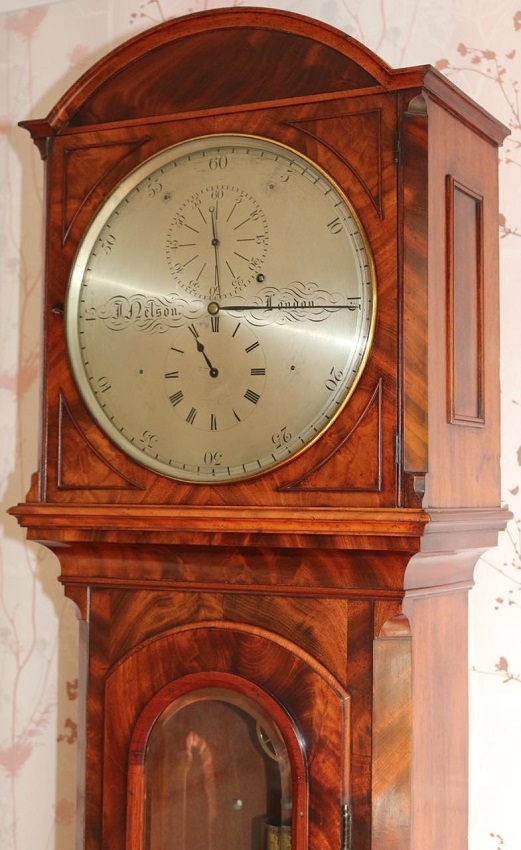
An early astronomical regulator by William Hardy – photo, TyneAntiques.co.uk
Regulator clocks (like the above example) were not about efficiency of reading but being able to read the time accurately and precisely. In order to facilitate this, the minutes hand was given the greatest prominence on the dial given it was most critical to get right, with the hours and seconds hands shown on a smaller but independent sub-dial, ensuring that each of the hours, minutes and seconds can be read independently of one another.
They were a trusted marker against which people repairing or manufacturing watches or clocks could set the time – and, crucially, one that everyone could see clearly from anywhere within the workshop. The concept of a regulator clock started to appear in England in the 1700s, and by the late 1800s the regulator clock was common across railroad stations in the United States, with employees using the regulator clock to synchronise their personal watches against so that everyone was working on the same time.
Contemporary regulator watches
Watches with regulator dials have somewhat of a niche appeal, and as I mentioned earlier, they certainly aren’t as intuitive (at least without practice!) for reading the time as the common approach to displaying time is. However, the regulator dial offers an interesting way to approach displaying the time and can help to populate the dial with more visual interest, similar to what we might see with a chronograph or calendar watch.
As such, they aren’t as uncommon as you might expect, with many brands having produced a regulator watch at one point or another, across all points of the price spectrum.
Two brands which I think are synonymous with regulator dial watches are Chronoswiss and Louis Erard.
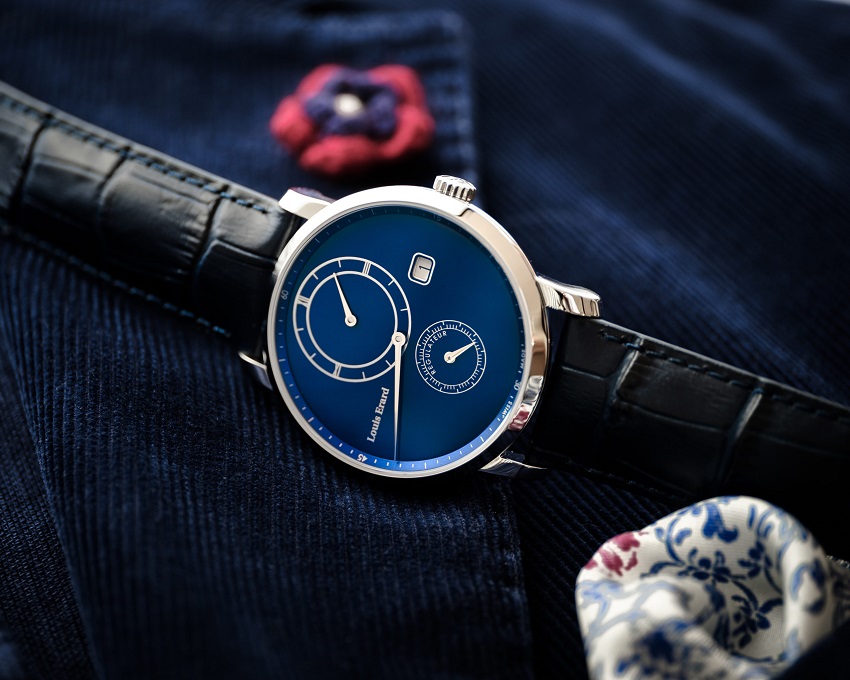
Louis Erard x Eric Giroud Le Régulateur – photo, Louis Erard
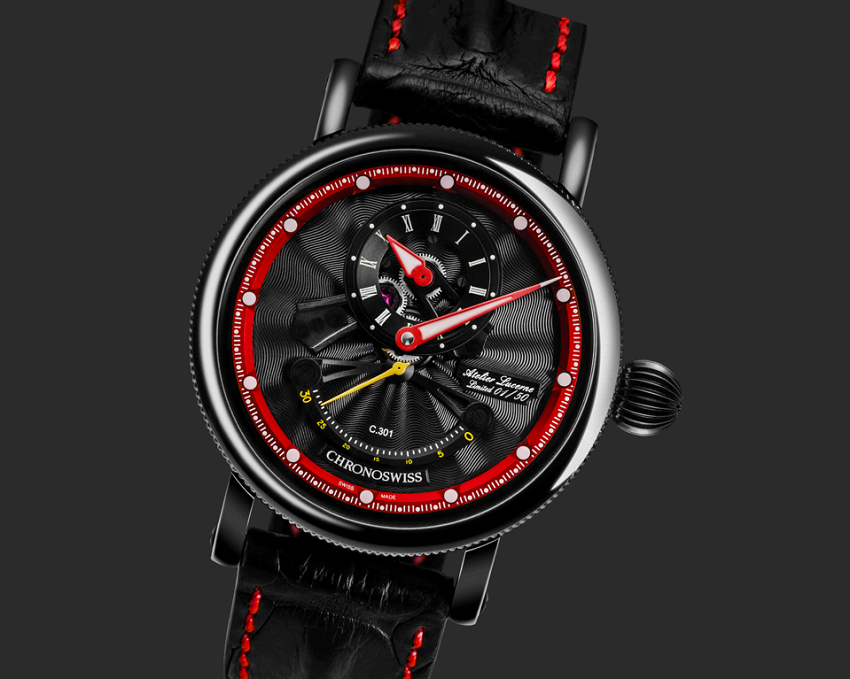
Chronoswiss Flying Grand Regulator – photo, Chronoswiss
Chronoswiss is a relatively young brand having been launched by founder Gerd-Rüdiger Lang in 1983. The brand’s first regulator watch, the Régulateur, was presented at Baselworld in 1988. Since then, the layout and key features of the watch such as an oversize onion crown have gone on to become an intrinsic part of the brand’s offering across their collection today (learn more).
Louis Erard (I have written more about them here) has been around longer, having been founded in 1929 as a casing company and watchmaking school. However, they also introduced the regulator dial to their line-up in the 1980s when they added a power reserve indication and regulator layout to the Peseux 7001 movement. The regulator layout is a prominent part of Louis Erard’s core collection, as well as regularly being used at the base upon which they have produced various collaboration watches with the likes of Vianney Halter and Alain Silberstein (learn more).
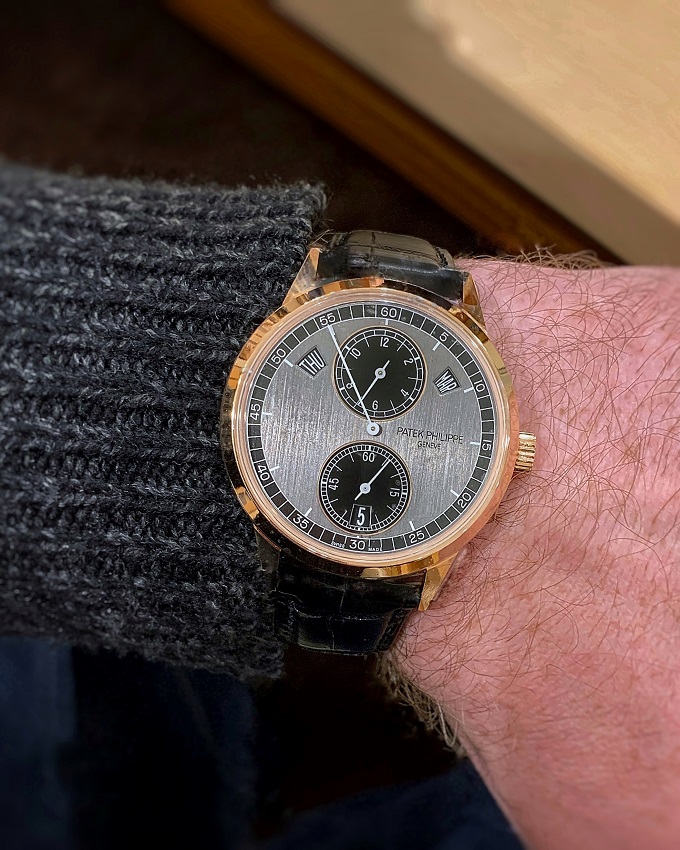
Patek Philippe 5235R Regulator
The regulator is also a feature of one of the most esteemed brands in watchmaking – Patek Philippe. The regulator dial layout was introduced for the first time ever to a Patek Philippe watch (at least as far as I can find) on the annual calendar reference 5235. The original 5235G in white gold with a light grey dial was introduced in 2012, before the updated 5235R in rose gold with a contrasting anthracite dial was introduced in 2019.
With reference 5235, the regulator layout with the hours at 12 o’clock and seconds at 6 o’clock is used, with additional apertures for the day and month either side of the hours sub-dial, and a small date aperture included at the bottom of the seconds sub-dial (learn more).
Independent watchmaker and AHCI member Raúl Pagès recently launched his Régulateur à détente RP1, a regulator watch which incorporates a new pivot detent escapement calibre designed by Pagès. This kind of escapement offers an improved mechanical efficiency when compared with a traditional Swiss lever escapement with the force being applied by the escape wheel directly to the balance wheel (learn more).
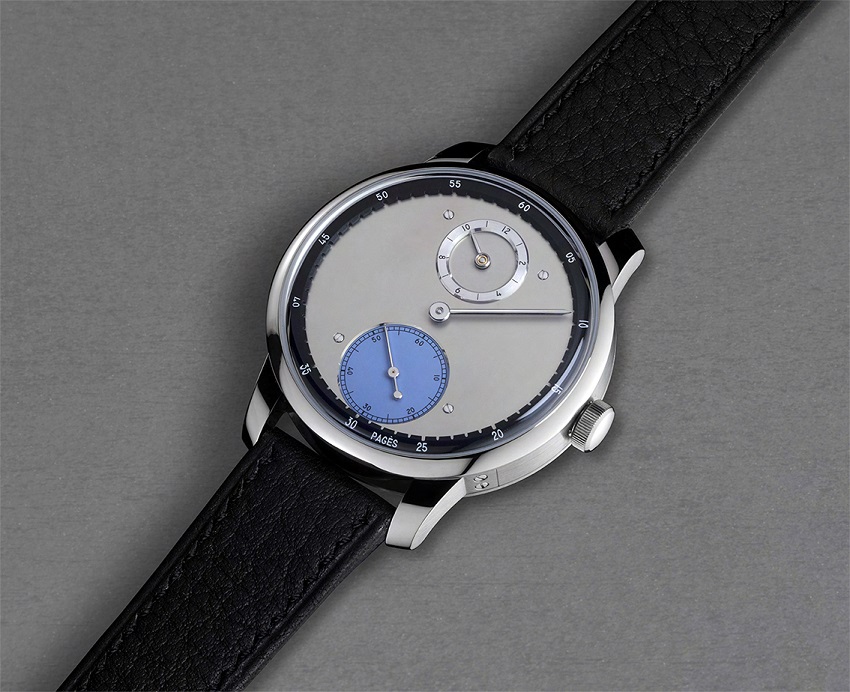
Régulateur à détente RP1 – photo, Raúl Pagès
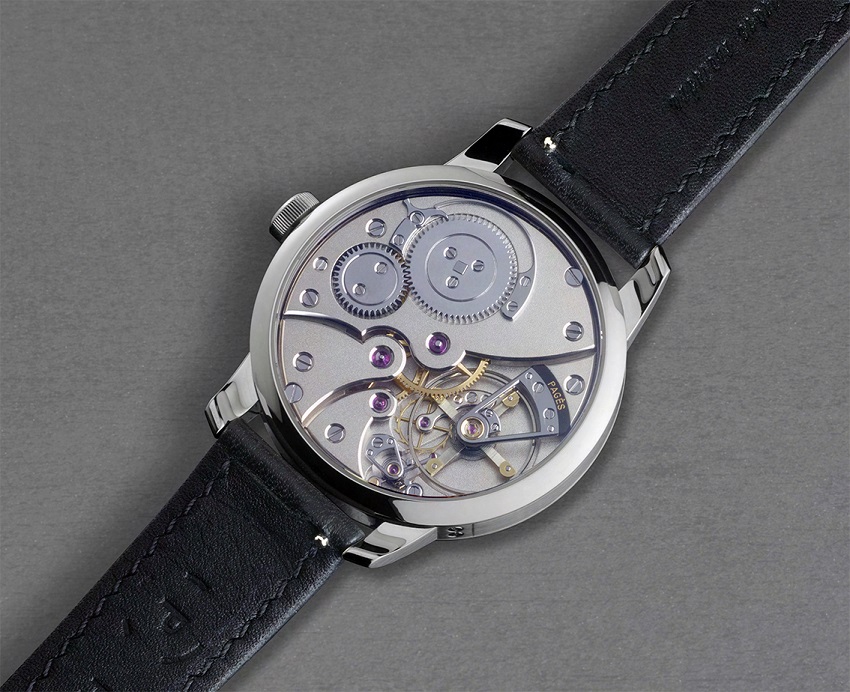
Régulateur à détente RP1 caseback – photo, Raúl Pagès
Finally, whilst it isn’t specifically described as a regulator watch, Bulgari’s Octo Finissimo Ultra (the world’s thinnest mechanical watch at an astonishing 1.8mm thick) is in effect a regulator, too.
In this instance, whilst one of the design principles of this watch was to make the barrel a feature of the dial (I imagine it would be somewhat difficult to hide it in something just 1.8mm thick, anyway!), the regulator layout was employed also for practicality; by mounting the hours, minutes, and running seconds independently of one another, this helped make the watch movement thinner and, ultimately, Bulgari to reclaim accolade of world’s thinnest mechanical watch (learn more).
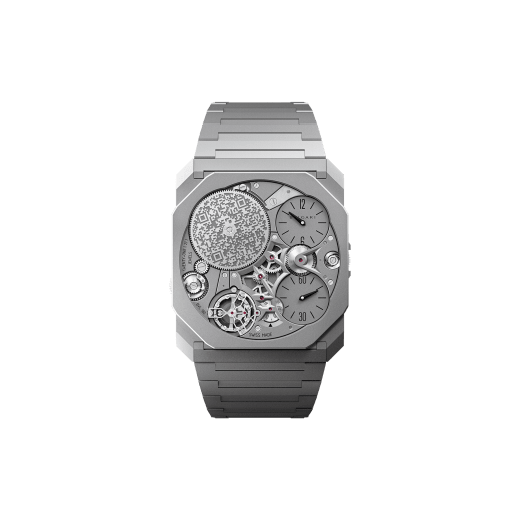
Bulgari Octo Finissimo Ultra with regulator dial layout – photo, Bulgari
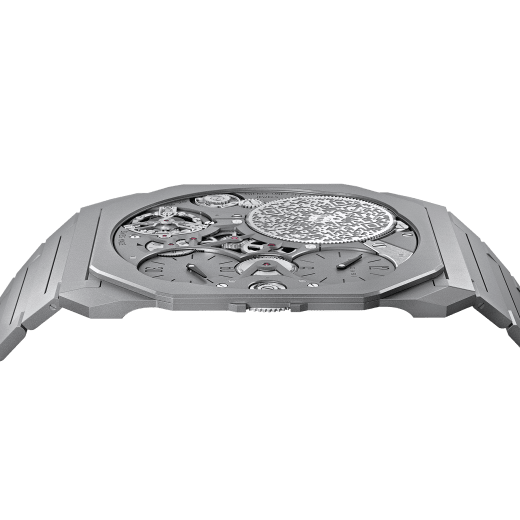
Bulgari Octo Finissimo Ultra – photo, Bulgari
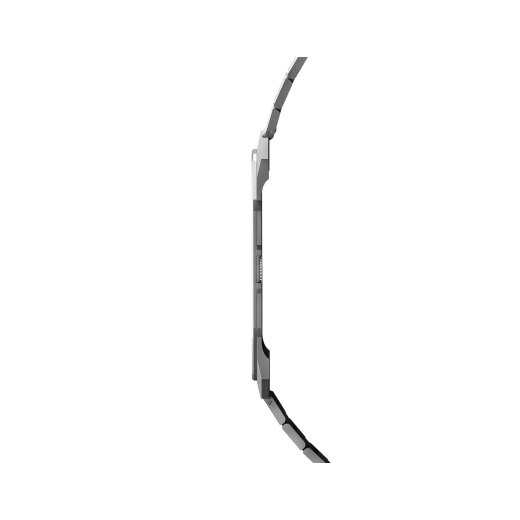
Bulgari Octo Finissimo Ultra side profile at 1.8mm thick – photo, Bulgari
In Summary
One of my favourite things about watchmaking is that there is invariably a story behind just about everything, whether it be a brand, a collection, or a watchmaker.
In this case, it was more around a particular style of dial layout. I found it particularly interesting to learn about the observatory and watch manufacture regulator clocks, and for me it adds a new story to the regulator watches that we see today. I’ll not look at a regulator watch in the same way again!
If you have any questions, please get in touch via our Contact page, or via our Instagram.
You might also be interested in:
- Value for Money in Independent Watchmaking – Part 2
- My Collecting Journey: Le Régulateur Louis Erard x Vianney Halter
- In Pursuit of Ultra-Thin Watchmaking
- Watch Stationery and Gift Ideas
- Watch Books, Watch Boxes and more at the Watch Affinity Shop on Amazon (commissions earned)
As an Amazon Associate, I earn from qualifying purchases – thank you for your support

